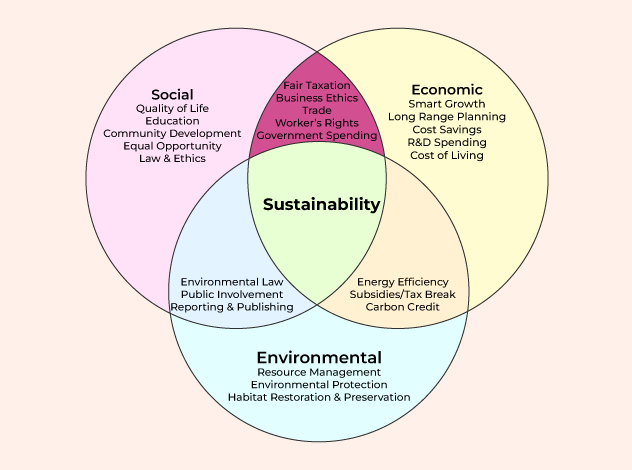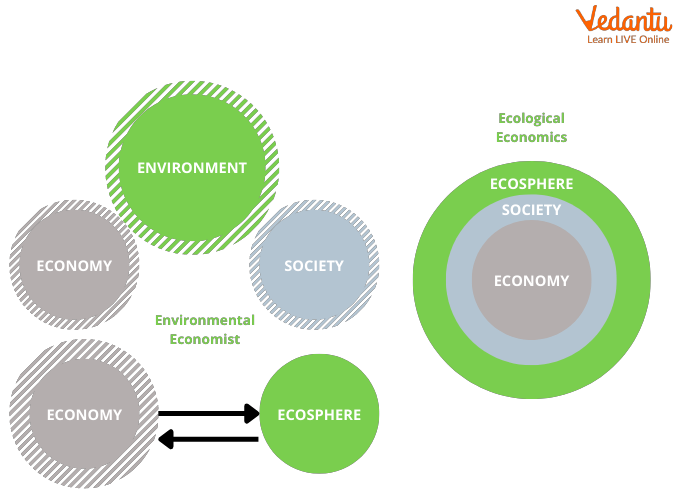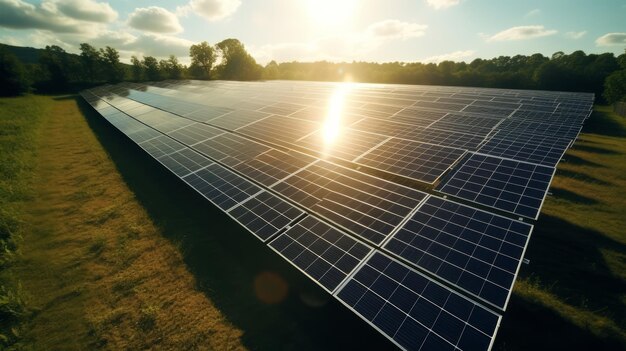
Understanding Green Economics: Principles, Practices, and a Sustainable Future
Ever wondered how we can achieve true prosperity without destroying our planet or leaving future generations behind? Traditional economics often focuses on endless growth, measured by GDP, but this model is increasingly showing its cracks as we face climate change, resource depletion, and growing social inequalities. Enter Green Economics, a revolutionary way of thinking that offers a powerful alternative.
This comprehensive guide will demystify Green Economics, exploring its core principles, practical applications, and why it’s not just an academic theory, but a vital blueprint for a more sustainable and equitable world.
What Exactly Is Green Economics? A New Lens on Prosperity
At its heart, Green Economics is a school of thought that integrates environmental and social concerns into economic decision-making. Unlike conventional economics, which often treats natural resources as limitless and pollution as an "externality" (something outside the economic system), Green Economics recognizes that:
- Our economy is a subsystem of the Earth’s ecosystem: We depend entirely on natural resources and the planet’s ability to absorb our waste.
- True prosperity goes beyond just money: It includes ecological health, social well-being, and a fair distribution of resources.
- Finite resources demand a different approach: Infinite growth on a finite planet is an impossibility.
In essence, Green Economics seeks to create an economy that is sustainable, equitable, and resilient, valuing not just financial capital, but also natural, social, and human capital. It’s about designing systems that allow humanity to thrive within planetary boundaries.
The Core Principles of Green Economics: Building a Sustainable Foundation
Green Economics is built upon several foundational principles that guide its approach to policy, business, and daily life. Understanding these principles is key to grasping the philosophy behind it.
- 1. Ecological Sustainability:
- Concept: This is the bedrock. It means living within the Earth’s carrying capacity – using resources at a rate that allows them to regenerate and producing waste at a rate that the environment can absorb.
- Application: Prioritizing renewable energy, protecting biodiversity, reducing pollution, and conserving natural habitats.
- 2. Resource Efficiency and Circularity:
- Concept: Moving away from the traditional "take-make-dispose" linear economic model. Instead, materials are kept in use for as long as possible, extracting maximum value from them, and then recovering and regenerating products and materials at the end of their service life.
- Application: Promoting recycling, reuse, repair, remanufacturing, and designing products for durability and disassembly. Think of products as services (e.g., renting tools instead of buying).
- 3. Valuing Natural Capital:
- Concept: Recognizing that ecosystems and natural processes (like clean air and water, fertile soil, climate regulation) are essential "assets" that provide invaluable services. These often have no market price but are critical for economic activity and human well-being.
- Application: Implementing policies that protect forests (carbon sinks), wetlands (water purification), and oceans (biodiversity), and assigning economic value to these services to ensure their protection.
- 4. Social Equity and Justice:
- Concept: Acknowledging that environmental degradation often disproportionately affects vulnerable communities, and that a sustainable economy must also be a fair one. It seeks to reduce poverty, improve public health, and ensure access to essential resources for all.
- Application: Fair distribution of wealth, access to green jobs, community involvement in environmental decisions, and ensuring the costs of environmental protection don’t fall unfairly on the poor.
- 5. The Precautionary Principle:
- Concept: If an action or policy has a suspected risk of causing harm to the public or the environment, in the absence of scientific consensus that the action or policy is not harmful, the burden of proof that it is not harmful falls on those taking the action.
- Application: Being cautious about introducing new technologies or chemicals until their safety is thoroughly established, even if full scientific certainty isn’t yet available.
- 6. Intergenerational Equity:
- Concept: Ensuring that our current actions do not compromise the ability of future generations to meet their own needs. It’s about leaving the planet in as good, or better, condition than we found it.
- Application: Long-term planning for resource management, investing in sustainable infrastructure, and avoiding irreversible environmental damage.
- 7. Beyond GDP (Gross Domestic Product):
- Concept: Recognizing that GDP, which only measures economic activity, is an inadequate measure of true progress or well-being. It doesn’t account for environmental degradation, social inequality, or the value of unpaid work.
- Application: Advocating for alternative metrics like the Genuine Progress Indicator (GPI), Human Development Index (HDI), or Gross National Happiness (GNH), which incorporate environmental and social factors.
Practices and Applications of Green Economics: Making it Happen
So, how do these principles translate into real-world actions? Green Economics isn’t just theory; it’s a call to action for governments, businesses, and individuals alike.
1. Policy Tools and Government Initiatives
Governments play a crucial role in setting the framework for a green economy.
- Carbon Pricing:
- Mechanism: Imposing a cost on carbon emissions, either through a carbon tax (a direct fee per ton of emissions) or a cap-and-trade system (setting a limit on total emissions and allowing companies to buy and sell permits).
- Goal: To make polluting more expensive and incentivize cleaner alternatives.
- Subsidies for Green Industries:
- Mechanism: Providing financial support, tax breaks, or grants to companies involved in renewable energy, energy efficiency, sustainable agriculture, and other eco-friendly sectors.
- Goal: To accelerate the growth of green industries and make sustainable options more competitive.
- Regulations and Standards:
- Mechanism: Setting strict limits on pollution, mandating energy efficiency standards for buildings and appliances, promoting sustainable land use planning, and protecting endangered species.
- Goal: To prevent environmental damage and ensure a baseline level of environmental protection.
- Investment in Green Infrastructure:
- Mechanism: Funding projects like public transport networks, smart grids, renewable energy plants, green buildings, and sustainable water management systems.
- Goal: To build the physical backbone of a sustainable economy.
- Ecolabeling and Certification:
- Mechanism: Government or independent organizations provide labels that certify products or services meet certain environmental or social standards (e.g., Organic, Fair Trade, Energy Star).
- Goal: To help consumers make informed choices and reward sustainable businesses.
2. Business and Industry Transformation
Businesses are increasingly recognizing that sustainability isn’t just a cost, but an opportunity for innovation, efficiency, and new markets.
- Circular Economy Business Models:
- Practice: Companies design products for longevity, repairability, and recyclability. They may offer product-as-a-service models (e.g., renting power tools instead of selling them) or take back used products for remanufacturing.
- Example: Interface, a leading modular carpet company, has moved towards a "re-entry" program, taking back old carpet tiles to recycle into new ones.
- Sustainable Supply Chains:
- Practice: Businesses scrutinize their entire supply chain, from raw material extraction to manufacturing and distribution, to ensure ethical sourcing, reduced environmental impact, and fair labor practices.
- Example: Patagonia’s commitment to using organic cotton and recycled materials, and ensuring fair wages in its factories.
- Eco-Innovation:
- Practice: Developing new products, services, and technologies that are environmentally friendly, energy-efficient, and resource-saving.
- Example: Electric vehicles, plant-based alternatives to meat, biodegradable packaging.
- Corporate Social Responsibility (CSR) & ESG Investing:
- Practice: Companies integrate environmental, social, and governance (ESG) factors into their core business strategy and reporting. Investors increasingly use ESG criteria to evaluate potential investments.
- Goal: To ensure businesses are accountable for their broader impact beyond just profits.
3. Individual and Community-Level Actions
Green Economics isn’t just for big players; individual choices and local initiatives are powerful drivers of change.
- Sustainable Consumption:
- Practice: Making conscious choices about what we buy, how much we buy, and how we dispose of it. This includes reducing consumption, choosing durable products, buying local, opting for energy-efficient appliances, and supporting ethical brands.
- Example: Reducing food waste, using reusable bags and water bottles, repairing electronics instead of replacing them.
- Local Economies and Community Resilience:
- Practice: Supporting local businesses, farmers’ markets, and community-owned initiatives. This reduces transport emissions, keeps money circulating locally, and builds stronger, more resilient communities.
- Example: Community-supported agriculture (CSA) programs, local currency initiatives, community solar projects.
- Advocacy and Participation:
- Practice: Engaging with local government, supporting environmental organizations, and advocating for policies that promote green economic principles.
- Goal: To collectively push for systemic change.
The Benefits of Embracing Green Economics: A Win-Win-Win
Transitioning to a green economy offers a multitude of benefits, not just for the environment, but for society and the economy itself.
- Environmental Protection: Directly addresses climate change, biodiversity loss, pollution, and resource depletion, safeguarding the natural systems we rely on.
- Economic Resilience and Stability: Reduces dependence on volatile fossil fuel markets, fosters local economies, and diversifies economic activity, making economies more robust to shocks.
- New Job Creation: Investment in renewable energy, energy efficiency, sustainable agriculture, and circular economy models creates millions of new "green jobs."
- Improved Public Health: Cleaner air and water, reduced exposure to toxic chemicals, and more active lifestyles contribute to better health outcomes.
- Innovation and Competitiveness: Drives technological advancements and new business models, positioning countries and companies as leaders in the global green economy.
- Social Equity and Well-being: Aims to reduce poverty, improve access to resources, and create more equitable societies where well-being is prioritized over mere material accumulation.
- Long-Term Prosperity: Shifts focus from short-term gains to long-term sustainability, ensuring resources and opportunities for future generations.
Challenges and Criticisms of Green Economics
While the vision of Green Economics is compelling, its implementation faces significant hurdles:
- Transition Costs: Shifting from a fossil-fuel-dependent economy requires substantial initial investment in new infrastructure, technologies, and retraining.
- Political Will and Inertia: Powerful vested interests in traditional industries can resist change, and short electoral cycles often favor immediate economic gains over long-term sustainability.
- Behavioral Change: Encouraging individuals and businesses to adopt more sustainable practices can be challenging, requiring shifts in habits and consumer preferences.
- Measurement Difficulties: Valuing natural capital and measuring well-being beyond GDP can be complex and are still evolving fields.
- Global Cooperation: Many environmental challenges are global, requiring international agreements and cooperation, which can be difficult to achieve.
Conclusion: A Blueprint for a Regenerative Future
Green Economics is more than just a set of environmental policies; it’s a fundamental paradigm shift in how we understand and manage our economy. It recognizes that our economic well-being is inextricably linked to the health of our planet and the fairness of our societies.
By embracing its core principles – sustainability, circularity, valuing nature, and equity – and implementing its practical applications, we can move beyond the destructive cycle of endless growth and create an economy that truly serves humanity and the Earth. It’s a challenging but necessary journey, one that promises not just survival, but a more prosperous, just, and regenerative future for all.
Frequently Asked Questions about Green Economics
Q1: Is Green Economics anti-growth?
A1: Not necessarily anti-growth in terms of quality of life or well-being, but it is often critical of unlimited material growth on a finite planet. It advocates for qualitative growth (e.g., in efficiency, innovation, human development) and sustainable growth that respects ecological limits, rather than growth at any cost.
Q2: How does Green Economics differ from Environmental Economics?
A2: Environmental Economics often uses conventional economic tools (like cost-benefit analysis) to address environmental problems, sometimes still viewing the environment as an "externality." Green Economics goes further, fundamentally questioning the underlying assumptions of conventional economics and seeking a deeper, more systemic transformation of the economic system itself, integrating social justice more explicitly.
Q3: Is Green Economics only for rich countries?
A3: No. While developed countries have a significant responsibility due to their historical emissions and resource consumption, Green Economics principles are highly relevant for all nations. Developing countries can often "leapfrog" polluting technologies and build green infrastructure from the start, fostering resilient local economies and improving well-being.
Q4: What’s the role of technology in Green Economics?
A4: Technology is crucial! Green Economics champions eco-innovation – developing new technologies for renewable energy, energy efficiency, sustainable agriculture, waste reduction, and pollution control. However, it also stresses that technology alone isn’t enough; it must be guided by ethical principles and integrated into a broader systemic change.
Q5: Can I apply Green Economics principles in my daily life?
A5: Absolutely! You can start by reducing your consumption, choosing reusable products, supporting local and ethical businesses, conserving energy, reducing food waste, and advocating for sustainable policies in your community. Every small step contributes to the larger movement.



Post Comment